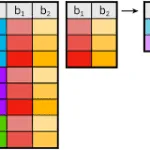In SQL Server there are a couple a ways you can delete rows from a table. You can use the TRUNCATE and DELETE command. Though the end result of both commands is the same, there are very important differences you should know about. Let’s explore their differences and learn What is the TRUNCATE command in SQL.
Table of contents
Whats the Difference between Truncate and Delete?
The TRUNCATE command is like a DELETE command without the WHERE clause with much less of a safety net.
What is the TRUNCATE Command?
TRUNCATE logs less information than DELETE. This means the TRUNCATE statement executes very fast; however, it does so at the expense of not logging each row deleted. This means, that you need to be very careful when using the command (actually be careful with DELETE as well!).
Though you are able to rollback a TRUNCATE command in SQL Server, you can not do the same in Oracle.
The TRUNCATE command is simple yet extremely dangerous. Here is an example to remove all rows from the employee table:
TRUNCATE TABLE employee
If you mistakenly execute a TRUNCATE statement, it is much more difficult to recover, and you may loose data in the process. The TRUNCATE command does log the pages it removes, so it is possible to recover the pages using some advanced code.
Here are some reasons to use TRUNCATE versus DELETE:
- You want to “reset” a table to its empty state. The DMSS removes all rows and resets identity key values to their initial state.
- You need to have a super quick way of clearing out table data. I can see this occurring when you need to repeatedly import test data or you have routines that use work tables or scratch tables to store information.
- You want to remove rows from a table without activating the table’s after delete trigger.
Keep in mind that TRUNCATE locks the table, so obviously don’t use this command on a table being shared by many concurrent users.
When to use the DELETE command
The DELETE command is used to remove records from a database. It is the most common way to do so. In its simplest form you can remove all the rows from a database or you can add a WHERE clause to remove only those meeting the criteria.
When execute the DELETE command,the DBMS logs all removed rows. This means it is easier to recover from a mistake, than it would a mistaken TRUNCATE.
The command
DELETE FROM employee
Will remove all employees from the employee table; whereas,
DELETE FROM employee WHERE firstName = ‘Kris’
deletes all employees whose first name is Kris.
I would pretty much recommend using a DELETE statement in all cases, except for those special circumstances that merit a TRUNCATE.
Read More: SQL DELETE Statement >>
Here are some things that happen during a DELETE that don’t during the TRUNCATE:
- Any deletion triggers are executed on the affected table.
- You are allowed to DELETE records that have foreign key constraints defined. A TRUNCATE cannot be executed if these same constraints are in place.
- Record deletions don’t reset identity keys. This is important when you need to guarantee each row uses a key that has never been used before. Perhaps, this need to happen for audit reasons.
- Depending on the locking you are using, row locks are placed on deleted rows. Unaffected rows remain unlocked.
Conclusions about Truncate and Delete
I should point out that TRUNCATE is considered a DDL command; whereas, DELETE is DML. I think this distinction should help you further understand when to use either command and the implications for doing so.
In a nutshell use DELETE to remove one or more rows from a table. Only in special situation, such as when you need to reset a table to its initial state should you consider TRUNCATE.
What to Read Next: Data Manipulation with SQL – The Ultimate Guide >>





Leave a Reply